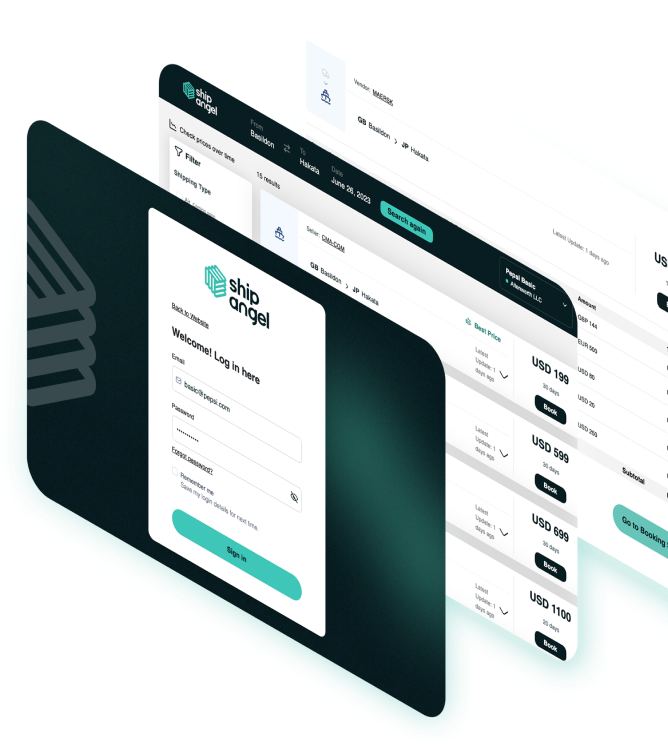Beyond choosing carriers and routes, shippers must make a crucial decision: how much cargo to allocate to fixed-rate contracts versus the spot market. Deciding on the right balance may mean the difference between predictable profits and financial instability.
Fixed rates are negotiated agreements between shippers and carriers, typically lasting from a few months to a year or more. These contracts lock in a specific rate per unit of cargo, offering predictability and stability. On the other hand, spot rates are short-term, market-driven prices determined by current supply and demand. They fluctuate daily or weekly, often responding to external factors like fuel costs, geopolitical events, and seasonal demand spikes.
Factors to Consider
Several key factors influence the decision between fixed and spot rates. Market volatility plays a big role. For example, when freight markets are stable or trending downward, fixed rates tend to offer security. In volatile markets, however, spot rates may behave erratically, creating opportunities or risks.
Additionally, cargo type and volume matter. High-volume, consistent cargo lends itself to fixed contracts, while irregular or unpredictable shipments may benefit from the flexibility of spot rates. Routes and seasonality also impact decisions, as trade lanes with consistent demand often have more competitive fixed rates, while seasonal peaks may push spot rates higher.
Furthermore, long-term contracts can foster stronger relationships with carriers, which could lead to such perks as priority loading. Finally, a company’s financial strategy and risk appetite determine whether budget stability or opportunistic cost savings are more desirable.
Fixed rates offer several advantages, including budget certainty, capacity assurance, and operational stability. Predictable shipping costs allow for more accurate financial planning, while contracted volumes ensure access to carrier space—a crucial advantage in tight markets. Long-term agreements also reduce administrative burdens associated with frequent rate negotiations.
However, fixed rates come with drawbacks. Companies locked in higher fixed rates may overpay when spot rates drop, and fixed contracts limit flexibility if shipment volumes or routes need to change.
Spot rates, on the other hand, can provide cost savings in weak markets, flexibility, and the ability to capitalize on short-term market opportunities. When capacity exceeds demand, spot rates tend to fall below fixed rates. Businesses can adjust volumes or switch routes without facing contractual penalties, and they can take advantage of sudden rate drops. But spot rates carry risks, such as price spikes during peak periods and capacity uncertainty. Constant rate negotiations can also consume time and resources, adding operational complexity.
The Ideal Mix
The ideal mix of fixed and spot rates varies by shipper, but analysts suggest a 60-70% fixed and 30-40% spot split as a starting point. This approach ensures stability for core cargo while maintaining flexibility for market opportunities or demand fluctuations. To achieve this balance, companies should identify core shipments that are regular and predictable—these are prime candidates for fixed contracts. The spot market can be reserved for flexible, opportunistic, or overflow shipments.
By modeling different market scenarios, such as rate spikes, downturns, or capacity shortages, shippers can evaluate how various fixed-spot ratios may perform. Historical data and market forecasts are valuable in this analysis. Additionally, companies should regularly review market conditions and adjust allocations. When markets are volatile, increasing spot exposure may be advantageous, while stable or upward-trending rate environments favor fixed contracts.
A multi-carrier strategy also helps mitigate risk. Diversifying fixed contracts across multiple providers reduces dependency on a single carrier and maintains leverage in negotiations. Technology and data analytics further enhance decision-making by tracking market trends, assessing rate competitiveness, and optimizing allocations.
Navigating the balance between fixed-rate contracts and the spot market is a strategic endeavor that requires careful consideration of market conditions, operational needs, and risk tolerance. Ultimately, the key to success lies in continuous monitoring and adaptation. Freight markets are dynamic, shaped by factors like global events, fuel prices, and seasonal fluctuations. Companies that regularly reassess their fixed-spot rate allocation, leverage data analytics, and diversify their carrier relationships will be best positioned to maintain operational resilience and financial performance. Striking this balance isn’t just about managing costs; it’s about ensuring long-term competitiveness and supply chain stability in an ever-evolving global marketplace.
About Ship Angel
Ship Angel is a cutting-edge rate management platform for BCO shippers, offering innovative solutions in rate management, amendment guard, invoice auditing, and sustainability reporting. Powered by AI, Ship Angel helps shippers manage rates efficiently, ensure contract accuracy, and optimize cost savings. With a commitment to transparency, Ship Angel works across industries to help companies avoid costly disruptions and stay ahead in a rapidly evolving global trade environment.
Want to Ensure a Smooth Supply Chain?
 Graham Parker
Graham Parker
 April 1, 2025
April 1, 2025

